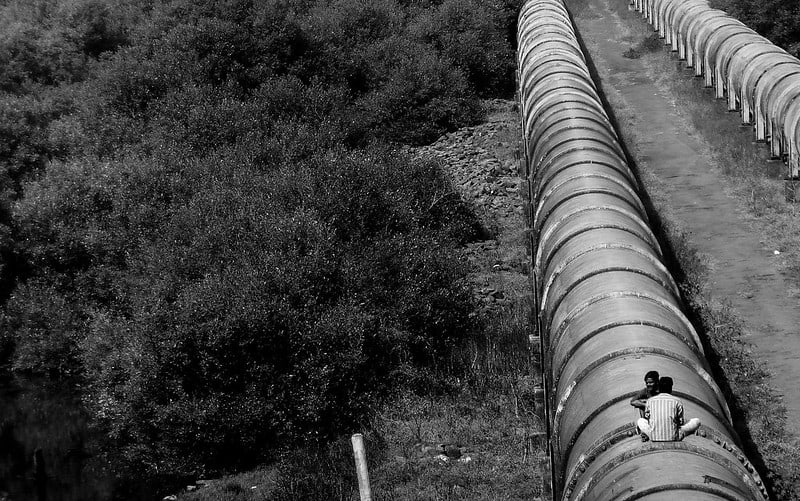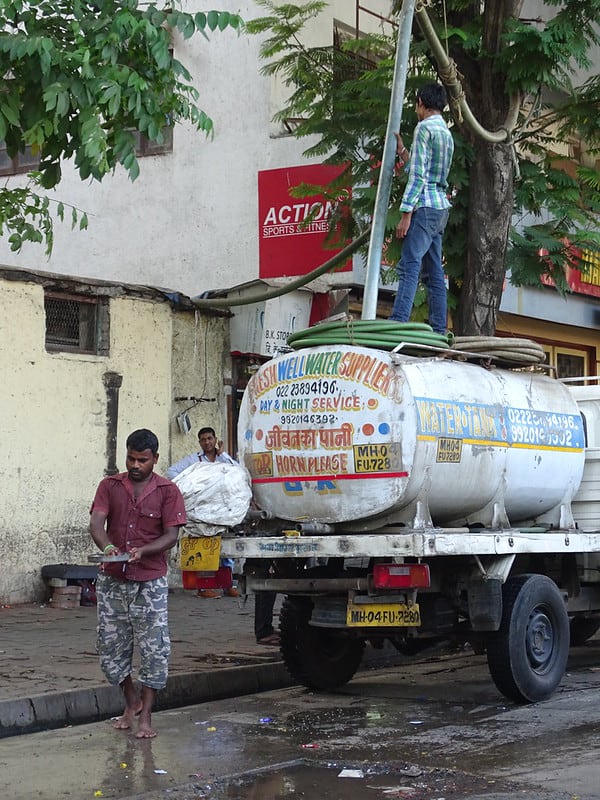In the first week of February 2020, there was a leak in the Veravali reservoir water pipeline in Andheri East. Neighbouring areas such as Jogeshwari, Kurla, and Ghatkopar were without water for three days.
The Brihanmumbai Municipal Corporation (BMC) workers, the Hindustan Times reported, had to enter 40 feet deep into the earth and “walk for 50 metres to reach the spot and fix the leak by welding the pipeline”. It took “150” workers and engineers “60 hours” to fix the leakage. But the fixed leakage did not mean that water reached all homes immediately.
Not even close.
As citizen complaints reached a crescendo, BMC explained on Twitter that for water to reach homes, the reservoirs, where water is pumped from nearby lakes, need to get filled. When the reservoir is filled, the water “is given to some area with adequate pressure for 2-3 hours to make water reach till tail end of the area.” Then the reservoir is filled again to supply to more areas.
This, BMC explained, cannot be done simultaneously. “If we try to give water to all areas at the same time, there won’t be adequate pressure and adequate volume of water,” the BMC tweeted. “It is complex interplay of volumes, pressure, size of area to be covered and also continuous replacement of water in reservoirs.”
Read more: Explainer – How Mumbai gets its water

Water supply in Mumbai is a complicated process often ruptured by leakages and pipe bursts. And when this supply is affected, it is not usually restored in 60 hours, sometimes it can take way longer.
In 2019, it took BMC “24 days (on average) to solve a complaint of a burst water pipe as well as leakage in water lines”, according to the Praja Foundation. Undoubtedly, this results in a lot of water wastage: almost 20% of water supplied to Mumbai is wasted, according to some BMC engineers. A few others say 25%.
But Praja Foundation’s inference of BMC’s environment reports shows that conveyance losses, or the amount of water lost in transmitting water from the source to the city distribution network, was 7.74% of the total water yield in 2018-19. It’s still a significant amount, averting which, could have served ‘23,92,593 persons’ water requirements’.
But many express doubts over these numbers for two reasons: it is difficult to track the flow of water in Mumbai and water audits that can successfully do it have not taken place. Second, “even if engineers could isolate zones for auditing purposes, the way consumer connections were metered and billed (does) not correspond to the calculations governing supply,” Lisa Björkman’s writes in Pipe Politics, Contested Waters: Embedded Infrastructures of Millennial Mumbai.
But Mumbai’s water leakage unilaterally points in one direction: if the city wants to calculate how much water is used or wasted, it would need sophisticated water metering.
The case for water metering
Water metering is considered a component of public water resource management to monitor water consumption and eventually reduce it. But Mumbai has not achieved 100% water metering to effectively calculate how much water flows into the city or how much gets used. The difference between the two could be used to understand leakage but the problem of unmetered connections is rife.
Lisa’s research in 2009 found that more than 100,000 connections in South Mumbai were unmetered. And while over 3 lakh connections in the city were metered, only 50 percent of the city’s estimated 330,000 meters were functional. There’s also a third problem: many times, even the functional meters do not give reliable readings.
It’s equally important to remember that most water meters in Mumbai are bulk meters, which means they monitor usage of an entire apartment complex or society, not individual homes. This means it’s difficult to ascertain per capita usage. Slums are especially vulnerable as they have shared connections and a lack of storage facilities. In M-East ward-level engineers report that “only 30 percent of the connections are actually metered,” Lisa writes.
There are also ingrained inequalities in the supply of water, and its associated leakage, in Mumbai. Water supply across the city is not homogenous. Slums in Mumbai receive only 45 litres per capita, per day, while non-slum neighbourhoods receives three times more, according to a Brihanmumbai Municipal Corporation report, ‘Towards Equitable and 24×7 Water Supply for Greater Mumbai’. The United Nations estimates that 50-100 litres of water per person, per day is a human right.
Read more: Can individual water metering help Indian cities avoid Doomsday?

Towards 24/7 water supply
BMC has repeatedly tried to move towards a 24/7 water supply to meet the city’s water needs. The aim is to leave behind the concept of staggered supply that facilitates water storage in individual homes. But these efforts, Nikhil Anand discusses in his book, Hydraulic City, have been strongly compromised by the “prolific leakages of water from the city’s underground network”. In reality, the average timing of water supply in the city in 2018 is nowhere close to 24 hours, and has only been 5.9 hours, according to the Praja Foundation.
“Left unchecked, leaky pipes lose significantly more water in a 24/7 system than in an intermittent system (where leaky pipes are turned off for most of the day), and quickly make the regime unviable,” Nikhil writes. This means that leakage reduction is a necessary first step before conceiving a 24/7 water network.
Faulty pipelines, risk to life
Mumbai’s case of water loss due to leakage is not unique. Across the world, cities find it extremely challenging to fix leaky pipelines. But Mumbai’s topography might make the problem especially worse. In 2009, a leaky pipeline at Saat Rasta in Mumbai led to a caving in of the road. BMC immediately claimed to start working on replacements but renewing pipelines across the city is a daunting task, exposing many to risk.
Recently, a portion of a road at Girgaon also caved in due to “water ingress”. But along with motorists and pedestrians, it’s BMC’s own workers who are at risk: in October 2020, two BMC labourers died while fixing leakage in a water pipeline in Kurla.
So BMC is right, water supply in the city is a “complex interplay of volumes, pressure, (and) size of area”, but it’s also perilous, both for those hoisting the water infrastructure in their shoulders and those waiting beside dry taps.
Also read: